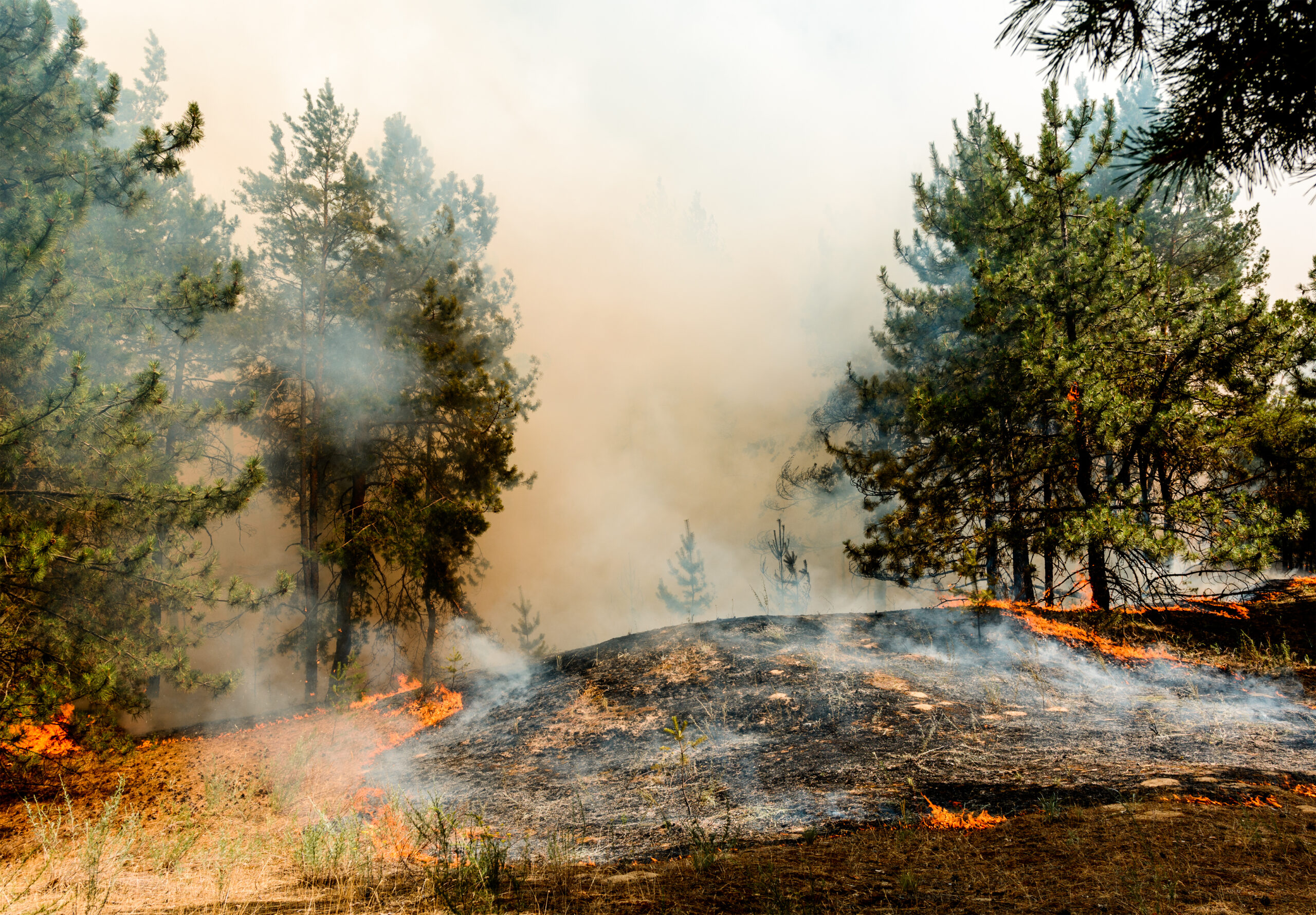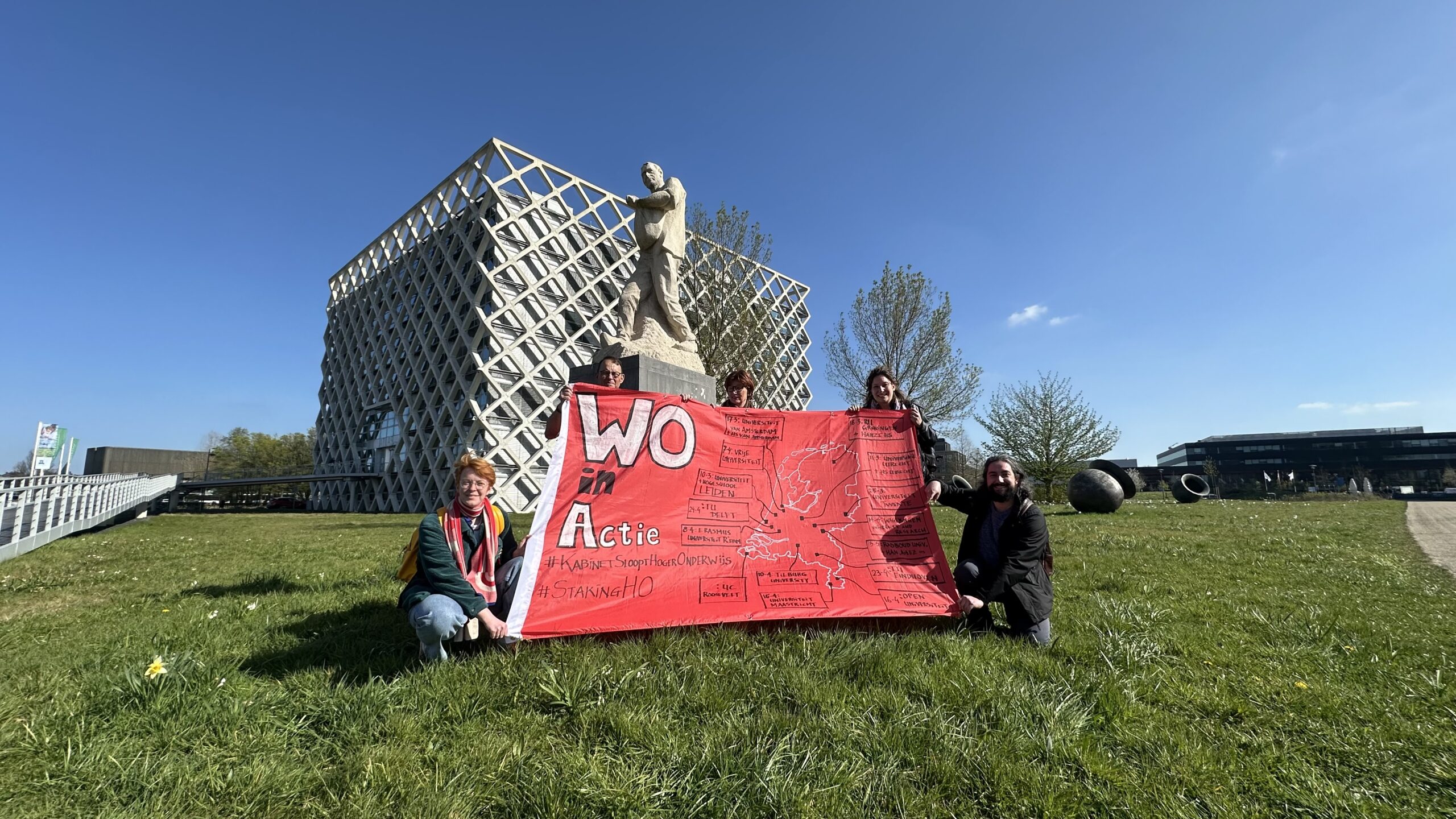By altering the design of the landscape, wildfires can be kept under control. The new course in Pyrogeography teaches students the tricks of the trade.
The cartoon depicts a forest with a fully decked out firefighter standing by a small fire, hands on hips and taking no action. The speech bubble makes it clear why: small fires prevent larger ones. ‘Many fires make light work’, in other words.
The illustration is one of a series made by Ivo Verhaar (master’s Environmental Sciences) and his group as the final assignment for the new course in Pyrogeography. In a sense, the cartoon summarises the new way of thinking that lies at the foundation of Pyrogeography. Wildfires are a natural phenomenon but must be contained.
‘Fire is a good servant, but a bad master’, says Cathelijne Stoof, quoting an English proverb. ‘Wildfires are a natural phenomenon that you can not, nor should, always prevent. Nature can handle the odd fire and even benefits from it. Fire has a purpose in the landscape, much like floods do.’ The analogy between water management and fire is one Stoof enjoys making. She refers to the new approach as integrated fire management. ‘It means looking at fires from a holistic perspective, involving everyone who has an influence on the emerging of fires or is affected by them.’
Increasing
Prevention is key in this new approach. Prevent fires from becoming so large that they rage out of control. Stoof: ‘Increasingly, fires become so large that we are no longer able to suppress them, while nature is unable to handle their impact.’ The rising temperatures on our planet will cause the number of wildfires to increase significantly. Funds and focus are directed primarily at fighting the fires,’ Stoof says. ‘The fires are never linked to landscape management. What circumstances allow a fire to spark and spread so easily? The idea behind Pyrogeography is that we need people who have an integrated perspective.’
The course focuses on environmental science: how does a fire start and how does it impact nature, but also on social sciences. Stoof developed the course in collaboration with Jasper de Vries of Strategic Communication. ‘There is a significant social driver behind wildfires’, Stoof states. ‘In southern Europe, for example, the depopulation of rural areas. Fewer people live in rural areas, which means there are fewer people able to manage the landscape. Previously, small-scale farming ensured landscape management. Not anymore. This means there is literally more fuel available in nature.’
Fire expertise
Pyrogeography focuses strongly on practice. Stoof invited speakers from all over the world to apply their expertise to different geographical contexts. She stresses the importance of interdisciplinarity and the link between science and practice. One of the speakers, for example, is Marc Castellnou, the de fire chief from Catalonia who is currently doing a PhD in Wageningen under Stoof.
We need people who have an integrated perspective
It is precisely that input from the field that makes the course extra interesting, master’s student Verhaar agrees. ‘Because Cathelijne has such an extensive network in that domain, we had many guest speakers. People from the field who are not just academics but also have a firm base in the field. They really fight fire.’
This link with practice is also featured in the final assignments. Guest speakers and other ‘informants’ presented a problem related to wildfires. ‘The assignment was to develop a creative solution,’ Verhaar states. ‘Our informant was Jelmer Dam, wildfire coordinator of the Dutch fire brigade. His issue was that people in the Netherlands are insufficiently aware of the causes and risks of wildfires. And even if they are interested, their focus is on suppression rather than prevention. And, as soon as there is some rainfall, everyone immediately forgets the issue.’
Fire management
Verhaar and his group made two series of cartoons that illustrate the current situation and the desired situation. They also linked their solution to water management. Verhaar: ‘What would happen if we approached water management in a manner similar to fire management, reactively instead of proactively? The country would be flooded. The other series of cartoons shows a situation in which we approach fire management as we currently do water management. If we collaborate and manage the landscape properly.’
‘If you are creative, you process information in a different way’, Stoof explains the assignment. ‘It is a way to teach students to apply their acquired knowledge differently. They received a class in creativity from Simon Bennet, a teacher at the Rietveld Academy.’ This resulted in animations, cartoons and games, all of which will be shared with the public. Verhaar is convinced: ‘I will write my thesis on wildfires, and Cathelijne will supervise.’

 The new approach to wildfires focuses on prevention. Photo: Shutterstock
The new approach to wildfires focuses on prevention. Photo: Shutterstock 

